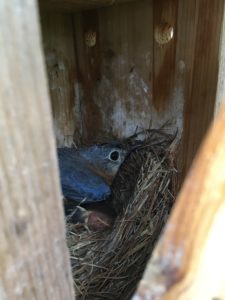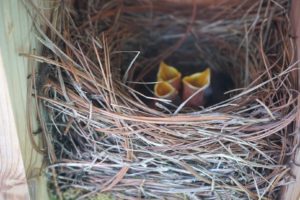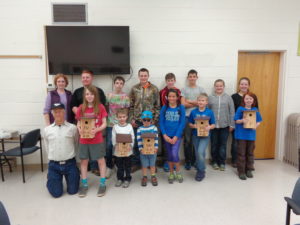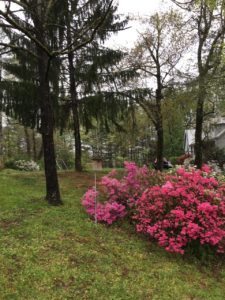Helping the Eastern Bluebirds
go.ncsu.edu/readext?681066
en Español / em Português
El inglés es el idioma de control de esta página. En la medida en que haya algún conflicto entre la traducción al inglés y la traducción, el inglés prevalece.
Al hacer clic en el enlace de traducción se activa un servicio de traducción gratuito para convertir la página al español. Al igual que con cualquier traducción por Internet, la conversión no es sensible al contexto y puede que no traduzca el texto en su significado original. NC State Extension no garantiza la exactitud del texto traducido. Por favor, tenga en cuenta que algunas aplicaciones y/o servicios pueden no funcionar como se espera cuando se traducen.
Português
Inglês é o idioma de controle desta página. Na medida que haja algum conflito entre o texto original em Inglês e a tradução, o Inglês prevalece.
Ao clicar no link de tradução, um serviço gratuito de tradução será ativado para converter a página para o Português. Como em qualquer tradução pela internet, a conversão não é sensivel ao contexto e pode não ocorrer a tradução para o significado orginal. O serviço de Extensão da Carolina do Norte (NC State Extension) não garante a exatidão do texto traduzido. Por favor, observe que algumas funções ou serviços podem não funcionar como esperado após a tradução.
English
English is the controlling language of this page. To the extent there is any conflict between the English text and the translation, English controls.
Clicking on the translation link activates a free translation service to convert the page to Spanish. As with any Internet translation, the conversion is not context-sensitive and may not translate the text to its original meaning. NC State Extension does not guarantee the accuracy of the translated text. Please note that some applications and/or services may not function as expected when translated.
Collapse ▲The Young Naturalists 4-H Club learns about the environment and how to take care of it. In 2017 they built 15 bluebird boxes under the guidance of Joe Sanders, from the North Carolina Bluebird Society. Four of the boxes were placed in Jackson Park, and the rest were placed throughout Henderson County. Members of the Young Naturalists 4-H Club monitor the bluebird houses in Jackson Park, count the eggs and hatchlings, and help keep the boxes clean.
May report:
Nest box #1 – 4 babies
Nest box #2 – Nest, but no eggs
Nest box #3 – Has 1 baby that hasn’t fledged
Nest box #4 – Has a nest with 1 white egg on top of the bluebird nest. We think it is a tree swallow.
April report:
Nest box #1 – 4 eggs
Nest box #2 – No nest, no eggs
Nest box #3 – 5 eggs
Nest box #4 – The beginnings of a nest
Under normal circumstances, the Young Naturalists 4-H Club meets during the months of February through April to train for the state 4-H Wildlife Habitat Education Program (WHEP) competition. Volunteer Leader Ranae Worrell helps young people learn about different animals that are native to North Carolina, their foods and their habitats. Fortunately the Eastern Bluebird is one of the animals that is part of the WHEP competition. So the 4-H bluebird box project not only helps support the bluebird population in Henderson County, but also gives the 4-H’ers a hands-on opportunity to use what they learned. Below are some photographs provided by 4-H club members.
Ranae Worrell offers this advice for people choosing a location for a bluebird house, “You want to have it close to some shrubs so that the fledging babies can have some cover when they are leaving the nest. You also want a larger tree nearby as well so that the Daddy has a place to rest as he guards the box. The last thing needed is an open field so that both Mama and Daddy can find food sources for the babies.”











